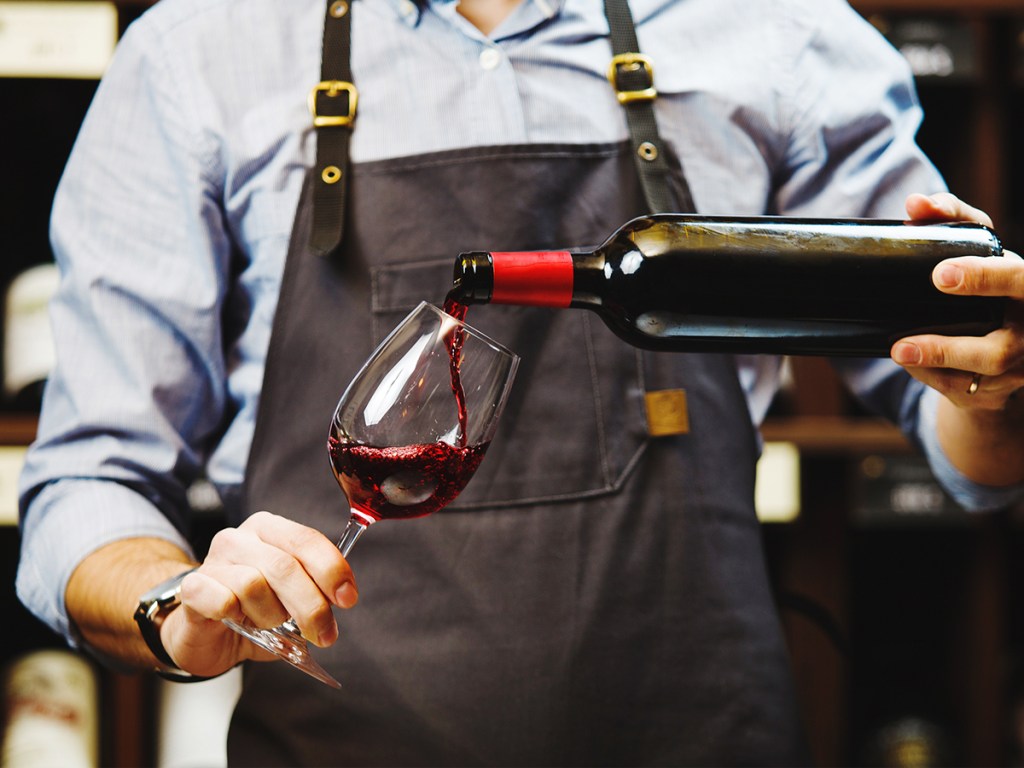Cameron Douglas, New Zealand’s only Master Sommelier, shares expert tips and advice for Kiwi on-premise owners…
On-premise venues in New Zealand, and probably many other countries as well, have had a tough time getting back up to speed since border restrictions were relaxed enough to allow more tourist and their wallets to visit again.

Here in Aotearoa New Zealand, we were more than ready to eat out and have someone else do the cooking and dishes and we’re happy to spend some money on the more expensive meals.
There is one giant challenge, however, that still remains for many venue owners and that is the availability of staff – staff with some career experience and staff willing to adapt their skill-set by learning more about the products that they are offering to guests.
Don’t get me wrong, there are many skilled front-of-house staff and Sommeliers still building their careers, but finding and keep ‘good staff’ (whatever that means) can be a constant challenge for some, along with the opportunities to train employees.
So, what can on-premise owners do to begin to ameliorate some of these challenges? There are many options – but the first step however is to make a list of the issues that must be resolved, alongside a list of what you know is done well.
Then, make a plan and write in dates on the calendar of how and when this list can be addressed. It is impossible to fix or make all the changes in one go, so it’s about starting with the ones that can.
Below are five ideas that can begin to address the goal of selling more wine…
1. Highlighting food and beverage pairings
Not all your customers like wine and food together – some may prefer water, sake, beer or alcohol-free wine.
For those that prefer wine and food pairings, be sure to select two, even three, wines from your list that pair well with each main course.
When it is time to present the food menu and explain any adjustments or additions for that day, add in this additional phrase: “We have paired all our main courses with wines from our list, if you’d like us to highlight some or all of them, we’d be delighted to do so”.
This tells your customers that you have taken the time to discover some specific pairings and it helps them take out the guess work of which wine will work best with the food. Here’s a good link to help you get started.
2. Supplementary menus with wine paring options
A great idea that works well and doesn’t add pressure to the kitchen is to select an either/or menu that showcases two or three starters, two or three mains and two desserts for an attractive set price. A bit like a degustation menu created from the a la carte selections instead of a whole different menu.
The key here is to upsell the wine pairings that are specifically chosen for these dishes. Priced as either a food and wine menu or one price for the food, and an additional price for the wine pairings. It is quite amazing sometimes how this presentation style works.
3. Tools of the trade
Wastage can be a big cost – from unsold food, to broken glassware and, sadly, wine that oxidises and cannot be served anymore.
Fortunately, one of the best modern wine preservation tools is now available from Coravin and is called a Pivot Pro.
It’s a system that replaces the cork or screwcap with a plug which has a simple internal valve. The shank or thick needle of the P-Pro passes through the valve and allows a glass of wine to be poured whilst leaving behind a small amount of argon gas which protects the wine from oxygen degradation effects.
This system means a wine will easily last up to seven days or more in excellent condition and reducing wastage by giving you more time to sell the remaining wine.
4. One extra bottle for today
If you run a reasonably busy dining area and have a regular clientele, there comes a time when they might start asking for something different by the glass.
Here’s an opportunity to select a bottle (just one) that is not usually available by the glass and open it.
This is an excellent way of capturing the attention of wine connoisseurs or customers you think may be interested, it also lets you check the wine for its characteristics; food and wine pairing potential and make some extra revenue.
Used in conjunction with the Pivot Pro system, you won’t be wasting any wine either.
5. Staff education
Is there ever a good time for staff education? Well, yes! And if you are thinking about how hard that actually is, then you are not alone.
You must make time though, there’s nothing worse than a server saying, “I don’t know, I’ll ask the bartender”. Or the server that cannot carry plates of food to the tables, clear a table properly or manage a tray of glassware properly, and it shows.
Staff is your biggest asset and is the key to selling and getting cashflow going.
I have seen time and time again, owners and managers not training staff at all or not training them properly.
Yes, that’s a big statement for me to make, but think about it for a minute – what actual technical skills have you identified are lacking and addressed or as we say ‘polished-up’ for all your staff? What information about the food programme have you explained and tested them on? And how have you expanded staff knowledge about the beverage programme?
It is not easy, but you have to start somewhere, right? There’s a book called Five Star Service – Your Guide To Hospitality Excellence by Evan Goldstein – it’s still available for under $10.00 on Amazon and is a great reminder of all the techniques in wine and food services.
How to catch up with The Shout NZ…
Online, updated daily with its own unique content and breaking news.
Our weekly newsletter – free to your inbox! Subscribe here.
We are also on Facebook and Instagram!


